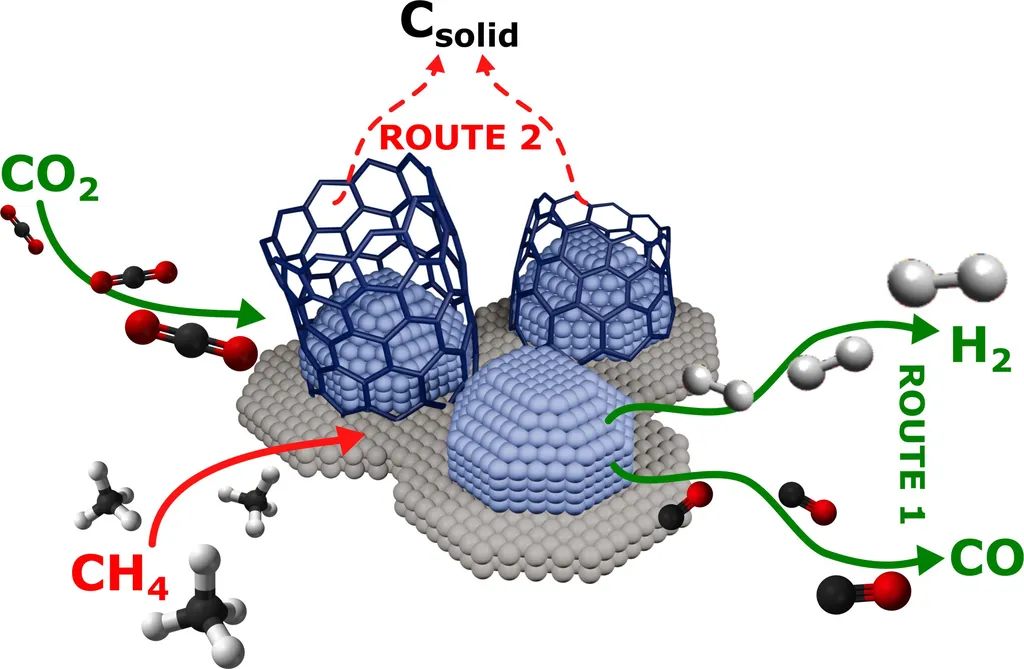In the quest to combat climate change and find sustainable energy solutions, scientists are delving deep into the world of carbon dioxide (CO2) methanation. This process, which converts CO2 into methane, has emerged as a crucial technology for energy storage, space exploration, and reducing CO2 emissions. At the heart of this technology lies the catalyst, a substance that speeds up the chemical reaction. And according to a new review published in Carbon Capture Science & Technology, the key to designing better catalysts might lie in the intricate dance between the metal particles and the support material they sit on.
Shuaishuai Lyu, a researcher at the Sinopec Research Institute of Petroleum Processing in Beijing, China, and lead author of the review, explains that the interaction between the metal and the support material can significantly enhance the catalyst’s performance. “The catalytic activity can be enhanced by up to 25 times in a CO2 methanation catalyst due to metal-support interaction,” Lyu says.
So, what exactly is this metal-support interaction, and why is it so important? Imagine a tiny metal particle, like nickel or iron, sitting on a support material, such as alumina or silica. The interface between these two materials is where the magic happens. Electrons can transfer between the metal and the support, altering the metal’s electronic structure and, consequently, its catalytic activity.
Lyu and his team systematically reviewed recent progress in this field, highlighting how changing the chemical composition of the support material can modulate electron transfer and enhance catalytic performance. “The primary goal of catalyst design is the modulation of electron transfer between metal particles and the support,” Lyu states. This modulation can make the catalyst more active, more selective, and more stable, all of which are critical for commercial applications.
The potential commercial impacts of this research are vast. More effective catalysts could lead to more efficient CO2 methanation processes, reducing the cost and energy required for CO2 conversion. This could make CO2 methanation a more viable option for industries looking to reduce their carbon footprint or even turn a profit from their emissions. Moreover, as space exploration ventures further into the cosmos, efficient CO2 conversion technologies will be essential for life support systems.
Lyu and his team also point out potential research directions for the future. As our understanding of metal-support interactions grows, so too will our ability to design catalysts tailored to specific reactions and conditions. This could pave the way for more efficient, more selective, and more sustainable catalytic processes across various industries.
The review, published in the journal ‘Carbon Capture Science & Technology’, offers a comprehensive overview of the current state of research in this field. As we continue to grapple with the challenges of climate change and sustainable energy, the insights gained from this research could play a pivotal role in shaping the future of CO2 methanation and other catalytic processes.




